Cobra
Grande
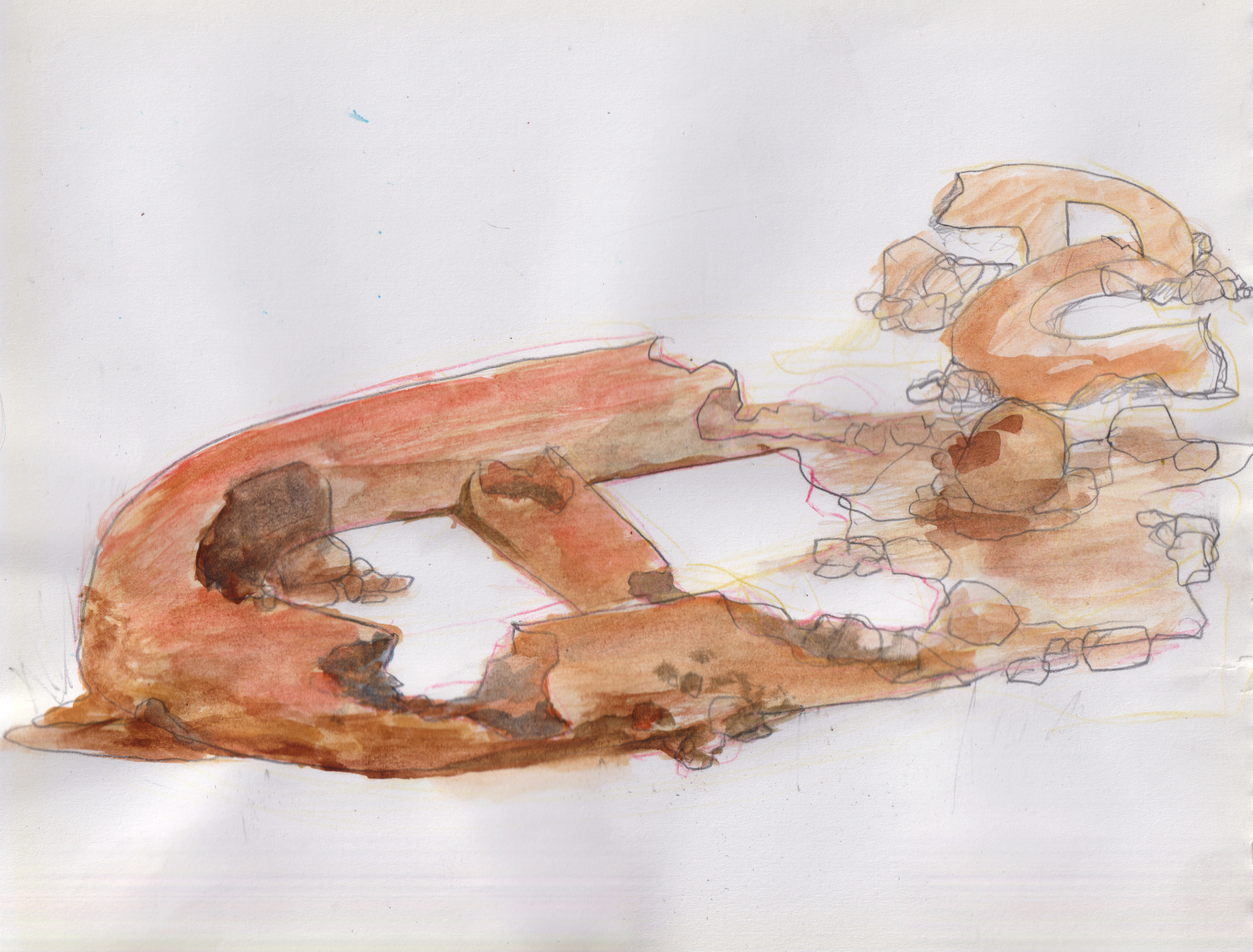
Cobra Grande was a proposal for a temporary sculpture made of unfired adobe. The sculpture consists of a life-size replica of a land-clearing drag chain, used in both legal and illegal deforestation, especially in the Amazon region. In these activities, the drag chain is pulled by two tractors that encircle an area of forest to be felled. The force of the chain uproots trees along with their roots.

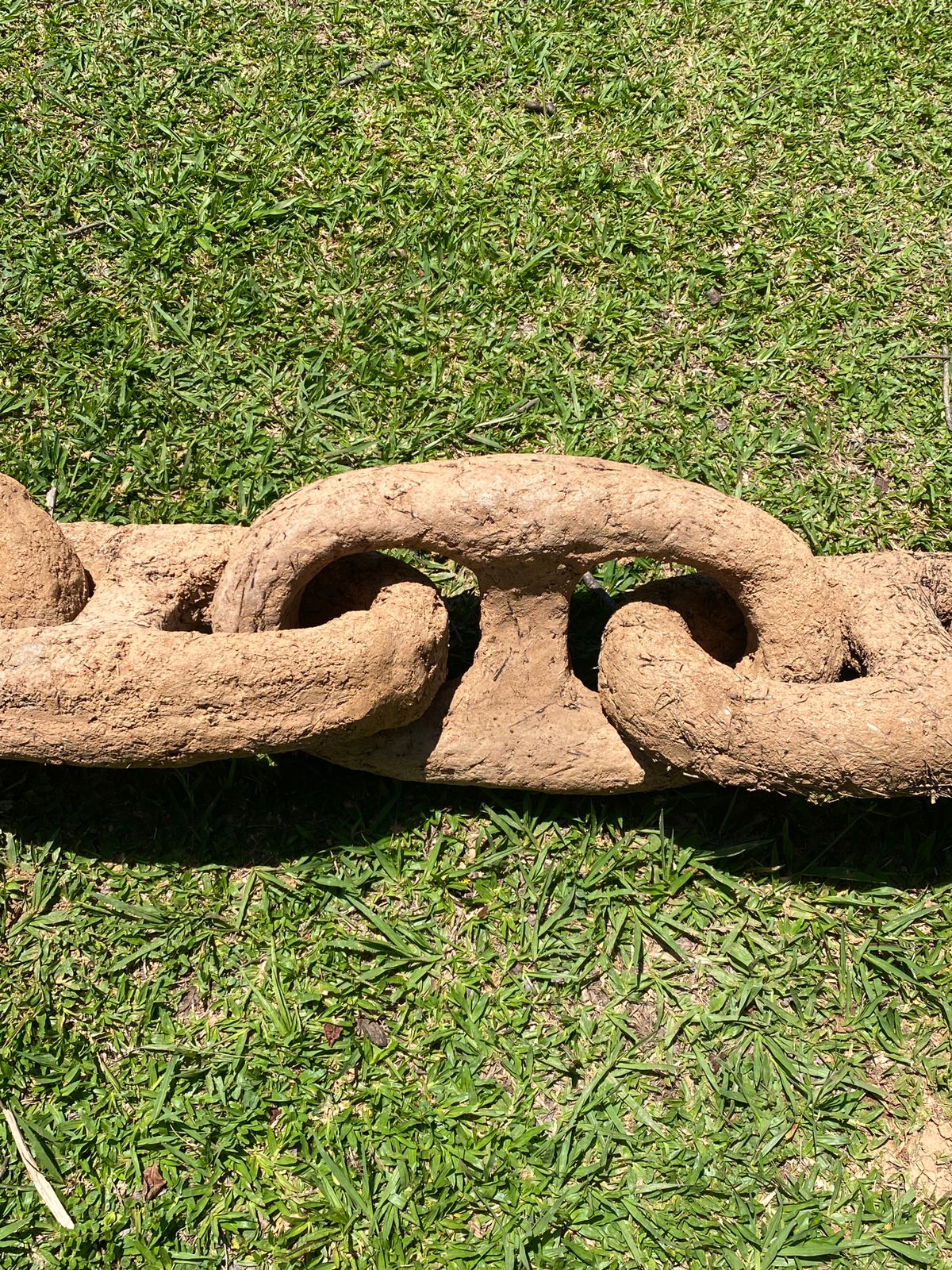


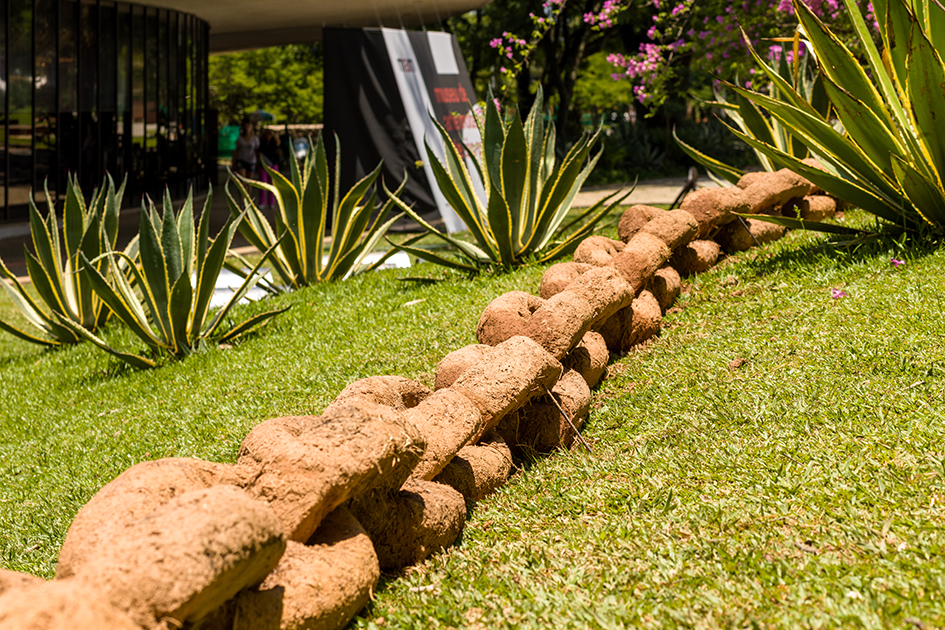
In Cobra Grande, the chain will be made of clay and straw, creating a visual resemblance to oxidized iron. This technique is known as COB, used in ancestral vernacular construction and recently revived through bioconstruction practices.
Each link will be shaped in clay using the same method as adobe bricks, formed from CNC-milled molds. The total length of the piece is approximately 70 meters, with each link measuring about 65 cm in height and width.
![]()
![]()


The chain will be arranged in an arc shape, separating historical works and the museum building from the area designated as the garden (nature), simulating a constricting attack—much like an anaconda or the drag chains themselves. This opposition between natural and industrial elements (snake/chain, clay/steel) embodies the concept of threat and, subsequently, deposition.
It is meant to disintegrate due to exposure to the elements, especially rain. As the links break under the force of the rain, they are also intended to provide shelter for the emergence of a garden. These tensions and expectations are a key part of my work. In this case, the chain disintegrates and returns to the earth.

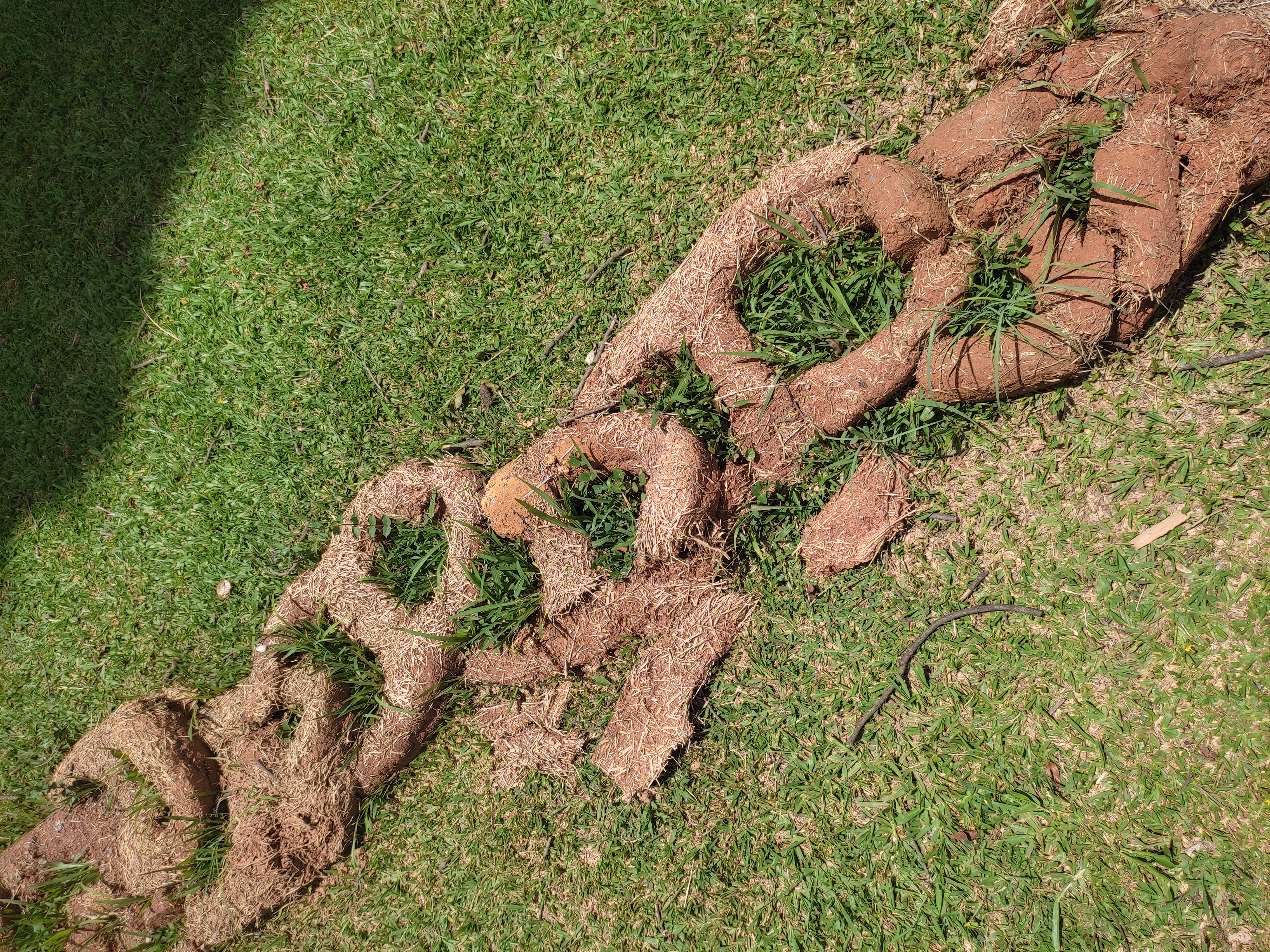
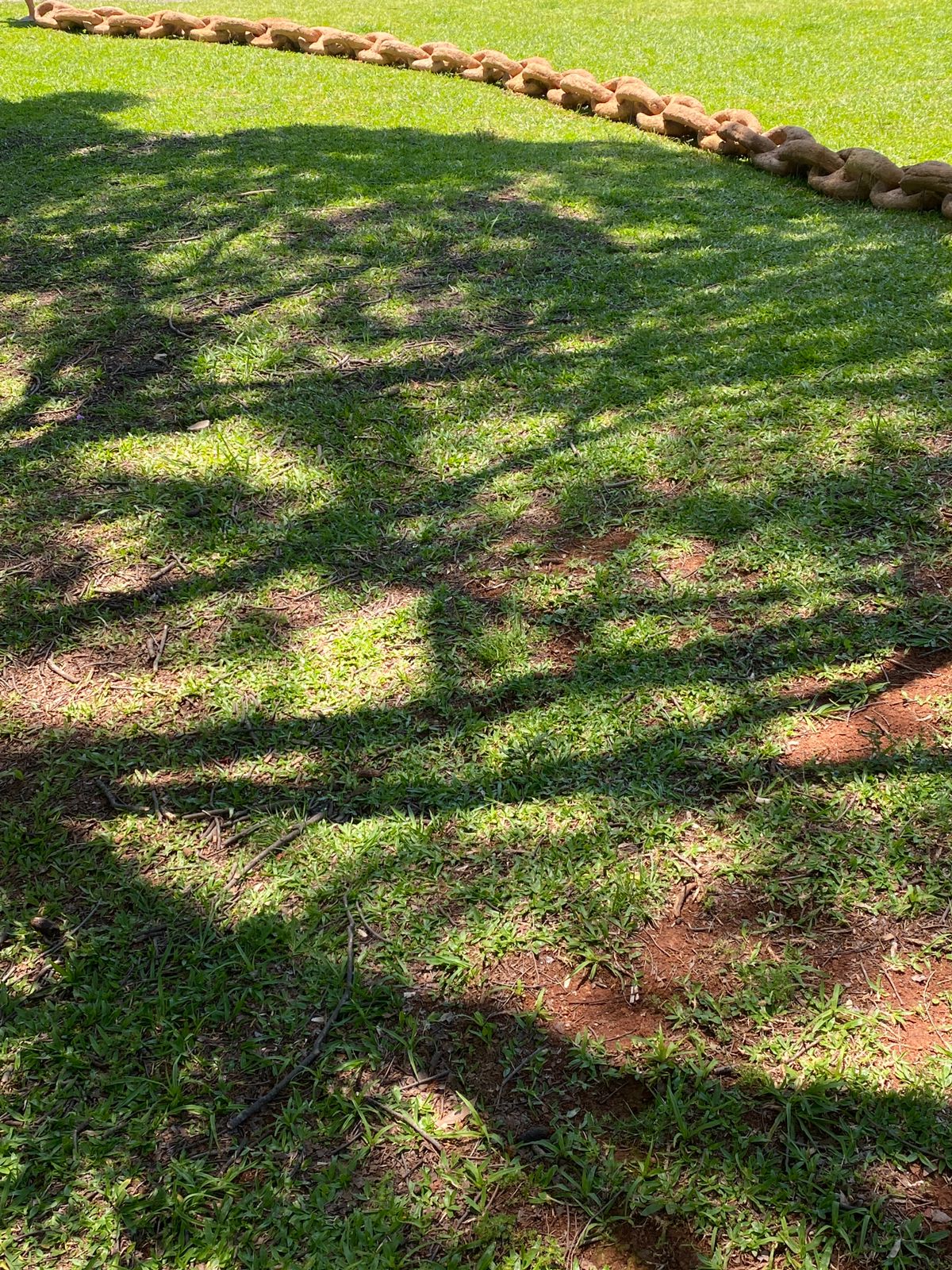

Big Snake, 2021
Earth and straw, 68 meter length
Ephemeral sculpture
Cobra Grande é uma proposta de escultura temporária feita em adobe sem queima. A escultura consiste em uma réplica em tamanho real de um correntão de desmate, utilizado em derrubadas legais e ilegais, principalmente no território amazônico. Nestas atividades, o correntão é arrastado por dois tratores que envolvem uma área de floresta a ser derrubada.
A tração da corrente arranca as árvores e suas raízes. Em Cobra Grande, a corrente será feita de barro e palha, criando uma proximidade da imagem do ferro oxidado. Esta técnica é conhecida como COB, utilizada para construções vernaculares ancestrais e recentemente resgatada por meio da bioconstrução. Cada elo será executado em barro em uma forma exatamente da mesma forma que os tijolos em adobe são executados, a partir de moldes usinados em CNC.
O comprimento da obra é de aproximadamente 70 metros de extensão por 65 cm de altura e largura. A corrente será disposta em forma de arco, separando obras históricas e o prédio do museu da área designada como jardim (natureza), de forma a simular um ataque constritor, assim como são as sucuris e os correntões. Esta oposição de elementos naturais e industriais (cobra/ corrente, barro/aço) constitui o conceito de ameaça e posteriormente deposição. A corrente deve se desfazer pela exposição ao clima, especialmente à chuva.
Conforme os elos se quebram pela força da chuva, também devem oferecer abrigo para o surgimento de um jardim. Estas oposições e expectativas fazem parte do meu trabalho. Neste caso, a corrente se desfaz e retorna à terra.